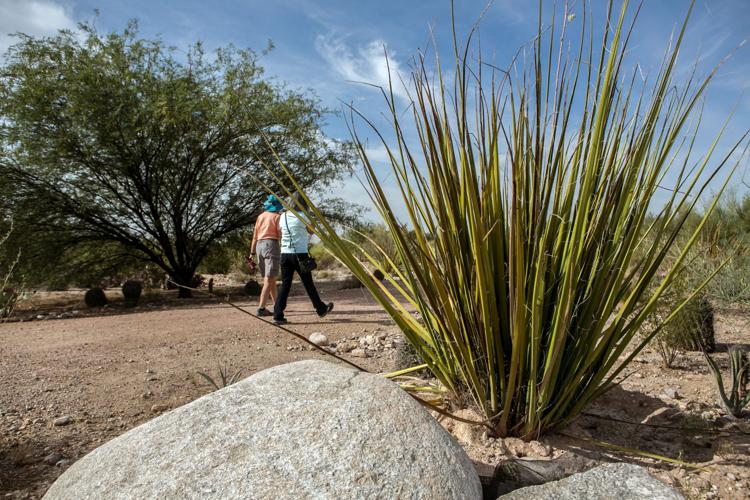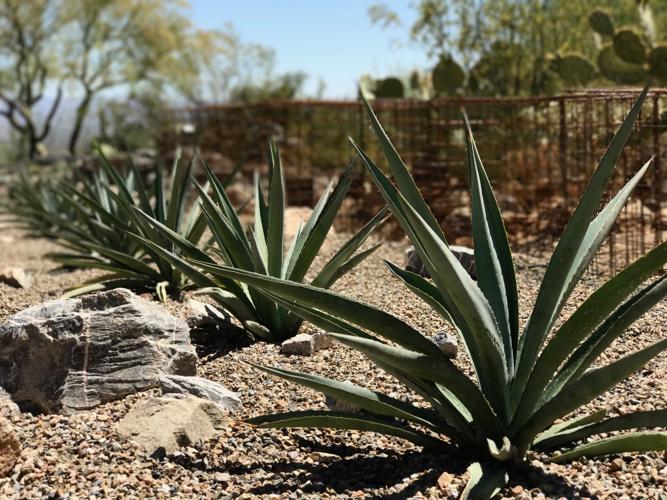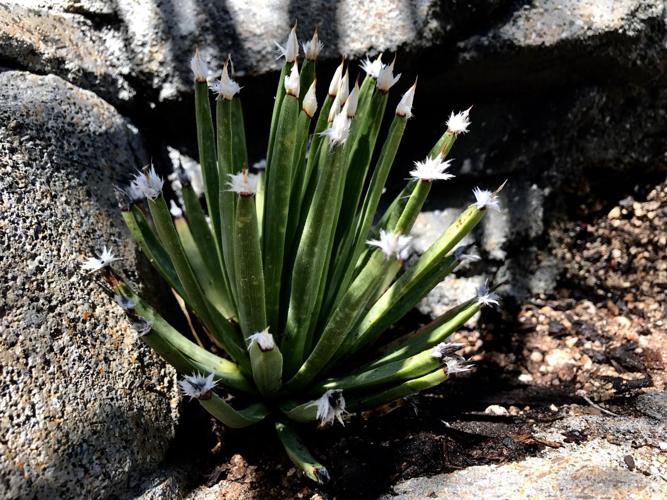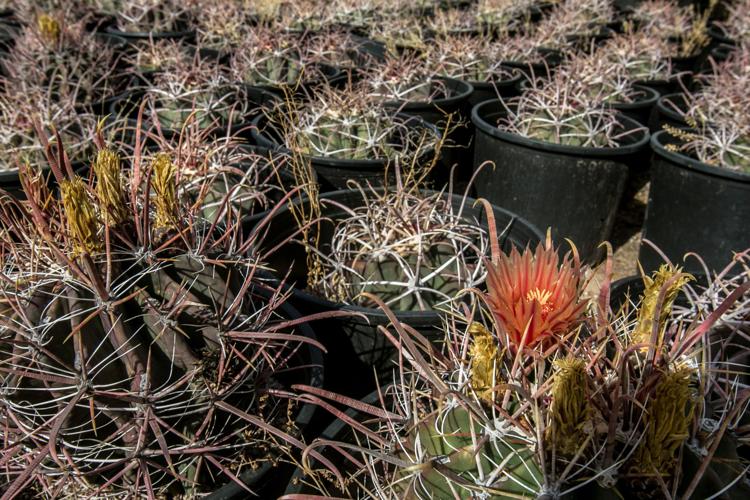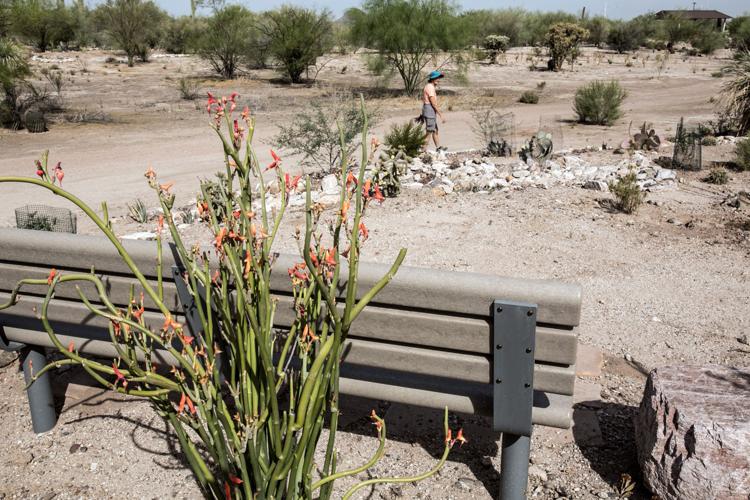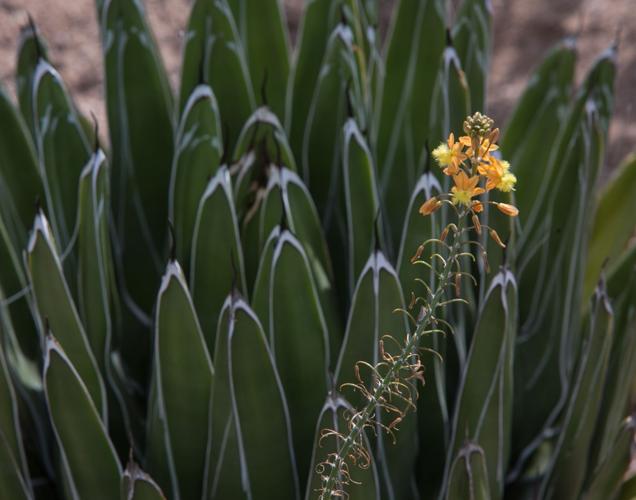Celebrate the summer solstice by taking a fresh look at our local botanical treasure: the succulent.
The Arizona-Sonora Desert Museum has opened a new exhibit of agaves. Meanwhile, volunteers have been adding new features to Pima Prickly Park.
AGAVE-MANIA
Agaves die spectacularly. Near the end of its life it issues a tall stalk from the center of its rosette of leaves. Flowers form and seeds or pups eventually emerge to create the next generation of agaves.
Once this energy is spent, the entire mother plant dies.
Several of the plants in the Arizona-Sonora Desert Museum’s old agave garden have gone through this fate in recent years. That gave museum horticulturist Jason Wiley an idea.
“A lot of the agaves had bloomed out and the garden was really uninspiring,” says Wiley. “I knew something needed to be done to the garden.”
He contacted Greg Starr, a local cactus grower and author of “Agaves: Living sculptures for landscapes and containers.”
The pair led the development of a new agave garden that is much bigger than the old garden. There are some 830 individual specimens that represent over 85 varieties, species and cultivars.
Both Sonoran Desert natives and non-natives populate the garden. It includes several cultivars developed in agave-manic Japan.
There are common types like Agave americana, often called the century plant, and Agave parryi var. truncata, or artichoke agave.
Most rare is the Agave albopilosa, which sports tufts of hairlike strands on its leaf tips.
Much of the change in the garden, which has been moved to a new location, also has to do with presentation, Wiley says.
The old garden used to present agaves like an art museum presents paintings: One plant of a species next to one plant of a different species and so on along a path.
The new garden uses a backdrop of limestone and gabion walls to present several individual plants of a single type. In some areas the plantings simulate what they would look like in the wilds of Mexico. In another section the setting evokes how the Hohokam grew agave, which has been cultivated in Arizona for at least 1,400 years. In other places several are planted in a way they might look in someone’s yard.
“The reason for the mass plantings is to create drama to inspire people to grow these plants,” Wiley says.
“With our new interpretation, something we would really like to get across is that the agave is really a human-centered plant,” he says.
Cultivated agave has been used for tequila, mescal, fibers and building materials. “It was one of the most important plants to Native Americans in this region,” says Wiley.
PARK ADDITIONS
Pima Prickly Park is a succulent botanical garden jointly developed and maintained by the Tucson Cactus and Succulent Society and Pima County.
It’s been around since 2012. With plant relocations, donations and propagation, it continues to take shape on nine acres of an old gravel pit.
Tall, mature Hesperaloe funifera with white flowers flank a new entryway into the park. The 30 specimens were trucked from the University of Arizona’s lab facilities near the Tucson International Airport. Several desert spoons rescued from an airport parking lot project also have been added to the park.
Donations, mostly from society members, are helping to flesh out some new areas. Two cardones (Pachycereus pringlei) mark the spot of a growing garden of Baja California succulents.
Several senitas, also known as totem poles (pachycereus schottii) have been added to underdeveloped parts of the park.
Pima County’s nursery, which is next door to the park, has donated some plants, including several trees to create a shady rest area from which visitors can get a view of the agave garden.
Another seating area on a berm provides another good vista. The wild-growing salt bush was taken out for a design that one might see in a residential yard: cholla, lady slipper, ocotillo and screwbush mesquite in beds lined with rock.
Some 200 potted barrel cacti are awaiting planting in the new ferocactus garden, which should be completed this summer, says Linda Heisley, the society’s park volunteer coordinator. Many of them, which are on public display right now, were rescued from land marked for future development.
Even one of the oldest gardens in the park got a facelift. The butterfly garden–certified by the North American Butterfly Association–has been expanded with several Bulbine frutescens plants. They look like yellow-flowered perennials or annuals, but a closer look at the leaves reveal they are succulents.
Unlike other parks in the Pima County system, the plants at Pima Prickly Park are left to survive and propagate on their own once they are established.
“For the plants out here, it’s really tough love,” Heisley says. “For the most part they have to make it or they don’t.”
That creates an ever-changing landscape that means something new is happening all the time.


